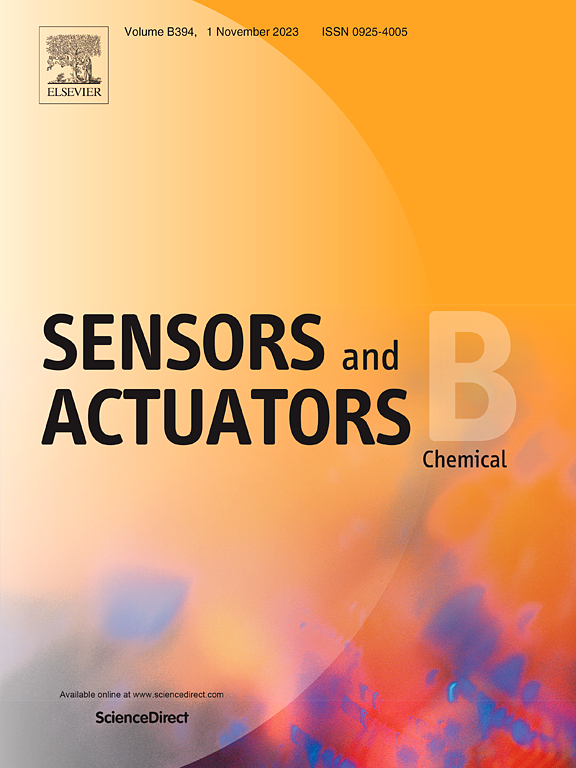具有热点和分子共定位效应的mof腔内结构,适用于原位和非原位SERS检测
IF 8
1区 化学
Q1 CHEMISTRY, ANALYTICAL
引用次数: 0
摘要
金属腔内粒子(M-PIC)结构是一种极好的SERS模型,具有丰富的级联热点模式。然而,在大多数情况下,传统M-PIC结构中的体积热点(vhs)通常只适用于液相或气相原位检测,这极大地限制了它们的应用场景。为了解决这一问题,我们提出了MOF- in- in-cavity (MOF- pic)模型,并以此为基础设计了基于AAO/Ag/Au/ZIF-8结构的SERS衬底。该结构中的ZIF-8粒子既是电场调制单元,又是目标分析物的空间载体,有效地实现了局域电场与目标分析物在同一微区域内的空间共富集、共定位。与传统的M-PIC结构相比,MOF-PIC结构具有更好的SERS增强效果,特别是在非原位检测场景下。以溶液中的H2S为例,AAO/Ag/Au/ZIF-8对其的检测限降至10-10 M.基于此,无论在原位还是非原位检测场景下,我们都可以轻松检测出癌细胞培养或啤酒制造和储存过程中产生的痕量H2S,证明MOF-PIC模型在各种应用中具有良好的适应性。本文章由计算机程序翻译,如有差异,请以英文原文为准。
MOF-in-Cavity Structure with Co-Location Effect of Hotspots and Molecules Suitable for Both Ex-Situ and In-Situ SERS Detections
Metal particle-in-cavity (M-PIC) structure is an excellent SERS model with rich cascade hotspot patterns. However, in most cases, the volume hotspots (VHSs) in conventional M-PIC structures are usually only appropriate for liquid- or gas-phase in-situ detection, greatly limiting their application scenarios. To solve this problem, we proposed a MOF particle-in-cavity (MOF-PIC) model and used it as a basis for designing a SERS substrate based on AAO/Ag/Au/ZIF-8 structure. The ZIF-8 particles in this structure act as the electric field modulation units as well as the spatial carriers of the target analytes, effectively realizing the spatial co-enrichment and co-location of the localized electric field and target analytes within the same micro region. Compared with the conventional M-PIC structure, this MOF-PIC structure shows better SERS enhancement, especially in the ex-situ detection scenario. Taking H2S in solution as an example, the limit of detection of AAO/Ag/Au/ZIF-8 for it is down to 10-10 M. Based on this, we can easily detect trace H2S generated during cancer cell culture or beer manufacturing and storage respectively, in both in-situ and ex-situ detection scenarios, which proves that the MOF-PIC model has a good adaptability in various applications.
求助全文
通过发布文献求助,成功后即可免费获取论文全文。
去求助
来源期刊

Sensors and Actuators B: Chemical
工程技术-电化学
CiteScore
14.60
自引率
11.90%
发文量
1776
审稿时长
3.2 months
期刊介绍:
Sensors & Actuators, B: Chemical is an international journal focused on the research and development of chemical transducers. It covers chemical sensors and biosensors, chemical actuators, and analytical microsystems. The journal is interdisciplinary, aiming to publish original works showcasing substantial advancements beyond the current state of the art in these fields, with practical applicability to solving meaningful analytical problems. Review articles are accepted by invitation from an Editor of the journal.
 求助内容:
求助内容: 应助结果提醒方式:
应助结果提醒方式:


